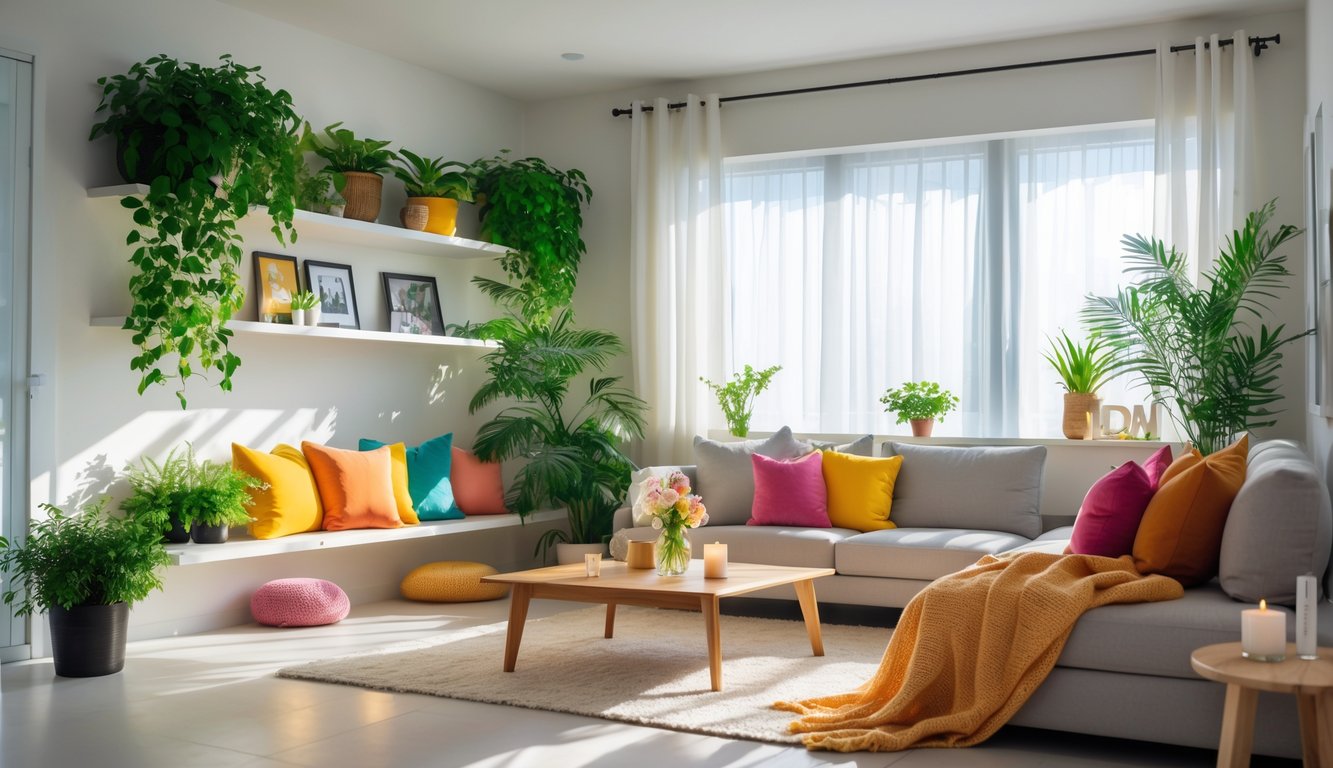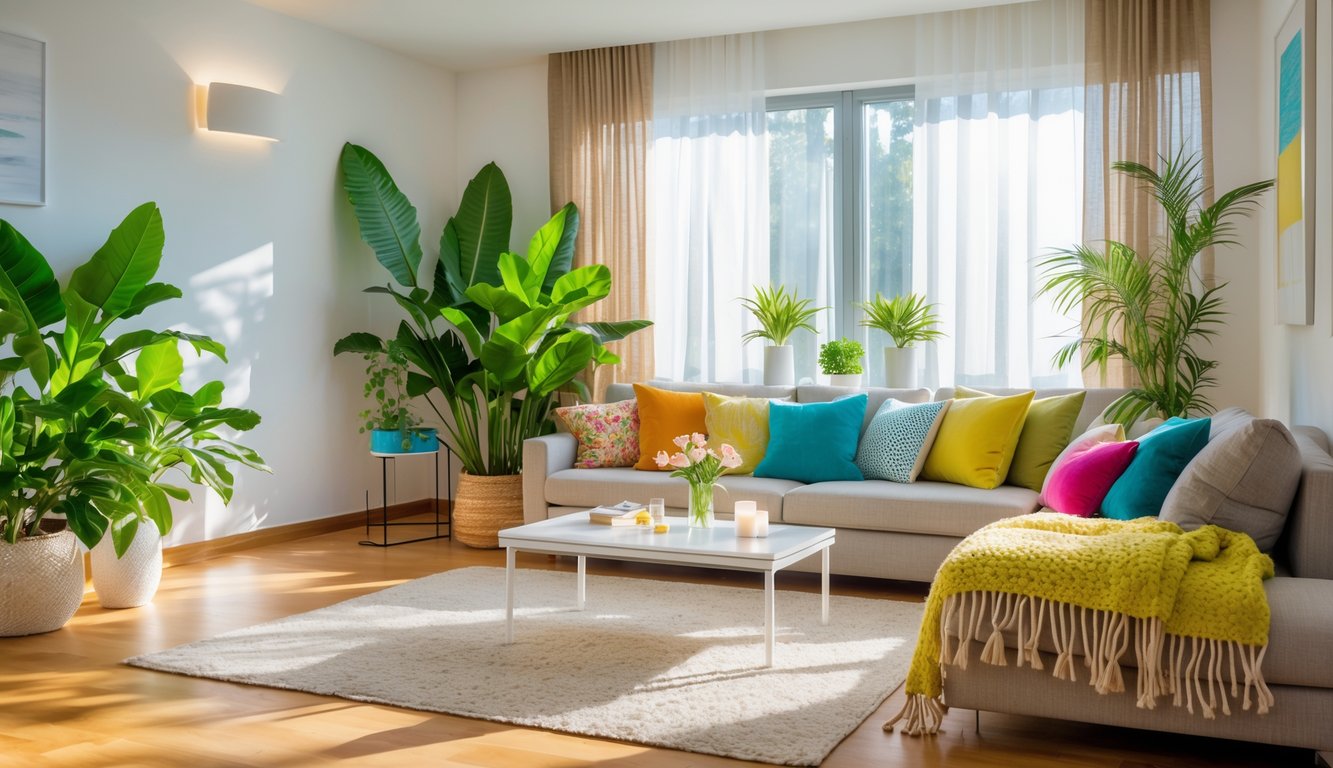
Every time I walk by that dumb hallway mirror, it throws these weird, lopsided shadows if the lamp’s even slightly off—drives me nuts. Do these little details actually matter? Apparently, yes, and more than I thought. Quick mood fixes: pillows with ridiculous color pops, random bits of cheerful art (yellow, for whatever reason, actually works), and just one stubborn little plant on the sill. Instantly lighter vibe. Supposedly, Harvard’s School of Public Health found a real link between live greenery and serotonin. Not those plastic succulents you grab at the checkout. Real, messy, dirt-dropping plants that barely survive your neglect.
Clutter in the kitchen—seriously, why do I even have this many mugs? Open shelving looks good until you realize you own 17. Storing stuff in pairs? Weirdly calms things down. The Spruce designers are obsessed with it. I keep hoping someone invents invisible paper towels, but until then, swapping out gross fluorescent bulbs for soft white or slapping a dimmer on the switches—huge difference. At midnight, I’d rather feel “home” than “CSI interrogation room.”
Did you catch that article about a UK family painting their entryway pastel blue to “feel less grumpy before work”? Winter makes the color thing feel urgent. Home Decor Bliss people say to focus colors where you actually walk, not just splatter them everywhere like a toddler. Whoever decided bathrooms can’t have bright art or a plant? Never tried it—mine’s way less bleak now, even with the leaky faucet.
The Connection Between Decor and Mood

Look, every time I stub my toe on another “minimalist” lamp, I wonder if my mood is just a casualty of home trends. Dopamine brights, hygge, mental health “must-haves”—I lose track of what’s science and what’s just Instagram. Who actually measures serotonin per square foot? Maybe someone does. People drop real money on “mood-boosting” decor, so there’s gotta be something to it, right?
How Home Design Affects Well-being
Let’s be honest: I once read a psychologist saying a cluttered entry table literally eats up your productivity (I call it my “where the heck are my keys” warm-up). My space messes with my head even if I pretend it doesn’t. Open layouts trick me into thinking I’m organized, but my laundry pile disagrees.
What’s weird is that Goodhomes Magazine claims “more space” equals “better mood.” I clean one corner and—no joke—my anxiety chills out. Is it magic? Shelves tidy, mood up, supposedly. Still, no candle ever made me love Mondays.
Science Behind Dopamine Decor and Happiness
Dopamine decor—yeah, it’s not chocolate. I see wild online claims (“yellow pillows fixed my existential dread!”) but, like, does it? Science says color can lift energy, but it’s not a guarantee. I notice it, though, when I bother to look. A little yellow, some green—it’s a psychological thing, maybe, if Harvard’s color theory folks are right.
But also, the evidence? Flimsy. Ballard Designs waffles: color and mood connect, but specifics? Good luck. Still, accent pillows, art, weird lamp shades—sometimes a color jolt actually helps. Or maybe I’m just bored of beige.
Mental Health Benefits of Mood-Boosting Spaces
Here’s the weirdest part: even a fake plant on my desk helps. Mental health pros keep saying a “designed-for-you” room is less stressful than a sterile waiting room. Scandinavians burn candles for SAD, I just burn my toast, but maybe it’s all linked. I swapped out family photos for bold art—my sleep tracker says I slept better. Coincidence? Maybe.
Lighting matters way more than I thought, especially on gross, gray mornings. Style at Home swears even candles and music can flip your mood. You can’t buy happiness, but you can buy a better lampshade and forget your inbox for a minute.
Harnessing Natural Light for Positive Vibes
So, glass everywhere, and my basil plant still looks like it’s given up on life. “Abundant sunlight” is not a cure-all. Natural light isn’t just about nice selfies; it messes with your serotonin, sleep, and—somehow—your clutter. Every “easy” fix is never easy. Curtain rods that never fit, mirrors that just collect dust but supposedly “open up” the room. Sure.
Ways to Maximize Natural Light
Some designer on a podcast told me to rip down half my curtains for “well-being.” Sunlight is energy, less crankiness—Dr. Sandra Scott says even 20 minutes can reset your mood. What I notice: dark corners are heavy. Like, physically heavy.
I yanked down the heavy drapes, put up sheer curtains. Suddenly, the place feels less like a cave, but now my neighbors know my laundry schedule. I shoved a dinky therapy lamp by my laptop because it rains for months. I paint the walls a scrub-friendly eggshell, push furniture out of the sun’s way—room feels bigger. Vitamin D or just less fabric? No idea, but my mood’s up.
Strategic Use of Mirrors and Window Treatments
Mirrors bouncing sunlight sounded like a Pinterest myth. But I stuck a frameless IKEA mirror behind the couch and—okay, it’s brighter. The dog’s obsessed with her reflection, though. Supposedly, a mirror at the end of the hall fakes more daylight. Not sure if it’s “designer,” but it works.
Window treatments: rabbit hole. Sheer panels and reflective stuff aren’t just for Pinterest. Architects swear light diffusion makes rooms bigger, friendlier. Privacy film saves you from living in a fishbowl—frosted stick-ons work fine, don’t bother with overpriced stuff. Sometimes I miss my blackout blinds, especially when the sun melts my snacks. But it’s kind of satisfying, watching sunlight hit my ugly couch and thinking, huh, maybe there’s something to all this.